I've added the CoreLocation Library, along with NSLocationWhenInUseUsageDescription to info.plist but when I compile and run, it does not display the current location or prompt the user to allow access to current location. I currently have the following below, but it just displays the entire US. and
The authorization status of location services is changed to: Not determined
is printed to the log, but I'm not being prompted to allow access to current location nor am I receiving the alert. I tried following the logic and flowchart here: Xcode warning when using MapKit and CoreLocation but it didn't work.
import UIKit
import MapKit
import CoreLocation
class MapViewController: UIViewController, MKMapViewDelegate, CLLocationManagerDelegate{
var loadPoints:[Int: MapPointAnnotation] = [Int:MapPointAnnotation]()
var map:MKMapView?
var loads: [Load]?
var rightButton: UIButton?
var selectedLoad:Load?
var manager:CLLocationManager!
override func viewDidLoad() {
super.viewDidLoad()
// Do any additional setup after loading the view, typically from a nib.
// Core Location
manager = CLLocationManager()
manager.delegate = self
}
func locationManager(manager: CLLocationManager!,
didChangeAuthorizationStatus status: CLAuthorizationStatus){
print("The authorization status of location " +
"services is changed to: ")
switch CLLocationManager.authorizationStatus(){
case .Denied:
println("Denied")
case .NotDetermined:
println("Not determined")
case .Restricted:
println("Restricted")
default:
println("Authorized")
}
}
func displayAlertWithTitle(title: String, message: String){
let controller = UIAlertController(title: title,
message: message,
preferredStyle: .Alert)
controller.addAction(UIAlertAction(title: "OK",
style: .Default,
handler: nil))
presentViewController(controller, animated: true, completion: nil)
}
override func viewDidAppear(animated: Bool) {
super.viewDidAppear(animated)
if CLLocationManager.locationServicesEnabled(){
switch CLLocationManager.authorizationStatus(){
case .Denied:
displayAlertWithTitle("Not Determined",
message: "Location services are not allowed for this app")
case .NotDetermined:
manager = CLLocationManager()
if let locationManager = self.manager{
locationManager.delegate = self
locationManager.requestWhenInUseAuthorization()
}
case .Restricted:
displayAlertWithTitle("Restricted",
message: "Location services are not allowed for this app")
default:
println("Default")
}
} else {
println("Location services aren't enabled")
}
}
convenience init(frame:CGRect){
self.init(nibName: nil, bundle: nil)
self.view.frame = frame
NSNotificationCenter.defaultCenter().addObserver(self, selector:"selectAnnotation:", name: "selectAnnotation", object: nil)
self.map = MKMapView(frame: frame)
self.map!.delegate = self
self.view.addSubview(self.map!)
}
func locationManager(manager:CLLocationManager, didUpdateLocations locations:[AnyObject]) {
var userLocation:CLLocation = locations[0] as! CLLocation
var latitude:CLLocationDegrees = userLocation.coordinate.latitude
var longitude:CLLocationDegrees = userLocation.coordinate.longitude
var latDelta:CLLocationDegrees = 1.0
var lonDelta:CLLocationDegrees = 1.0
var span:MKCoordinateSpan = MKCoordinateSpanMake(latDelta, lonDelta)
var location:CLLocationCoordinate2D = CLLocationCoordinate2DMake(latitude, longitude)
var region:MKCoordinateRegion = MKCoordinateRegionMake(location, span)
map!.setRegion(region, animated: true)
}




